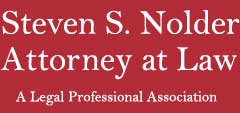Kaylon Pruitt appealed his 46 month sentence for being a felon in possession of a firearm and argued the district court committed procedural error by failing to explain the reasons for the sentence, as required by 18 U.S.C. § 3553(c). The Second Circuit affirmed and this is an otherwise forgettable decision but for the digs the panel gets in on the Sentencing Commission and the check the box forms used to legitimate a sentence.
The court suggested “to the United States Sentencing Commission and the Judicial Conference of the United States that the Statement of Reasons form included within the statutorily‐required form for the entry of criminal judgments ‐‐ Form AO 245B ‐‐ be amended to bring it into conformity with § 3553(c) and Supreme Court precedent. Specifically, a check‐a‐box section of the form, which was checked by the district court in this case, invites sentencing judges to impose a sentence within the applicable Guidelines range simply because the judge finds no reason to depart. Because that both undermines the statutory obligation to state the reasons for every sentence and unlawfully presumes the reasonableness of the advisory Guidelines range, the form should be amended.”
In a final notable footnote, the Pruitt panel takes a notable shot at the Sentencing Commission:
“[T]he form as a whole seems designed to encourage judges to sentence within the range. A path of least resistance is clearly marked, and it is consistent with the Commission’s overall approach to sentencing in the post‐ Booker era. In United States v. Booker , 543 U.S. 220 (2005), the Supreme Court held that the mandatory guidelines system was incompatible with the Sixth Amendment right to trial by jury, and it accordingly severed the provision of the Act that made the Guidelines mandatory. The Sentencing Commission has since repeatedly asked Congress to enact legislation requiring sentencing courts to give greater weight to the Guidelines range than Booker and its progeny permit. The specific proposals include laws that would require sentencing judges give “substantial weight” to the advisory Guidelines range and require appellate courts to accord a presumption of reasonableness to within‐range sentences. Thus, the objectionable part of Statement of Reasons form may reflect the law as the Commission wants it to be.”
OUCH—the power struggle between the judiciary and an agency under their umbrella.
http://www.ca2.uscourts.gov/decisions/isysquery/8aa1b28c-47db-478a-bbcf-8cb6bc47847d/3/doc/14-1921_opn_and_attachment.pdf#xml=http://www.ca2.uscourts.gov/decisions/isysquery/8aa1b28c-47db-478a-bbcf-8cb6bc47847d/3/hilite/

